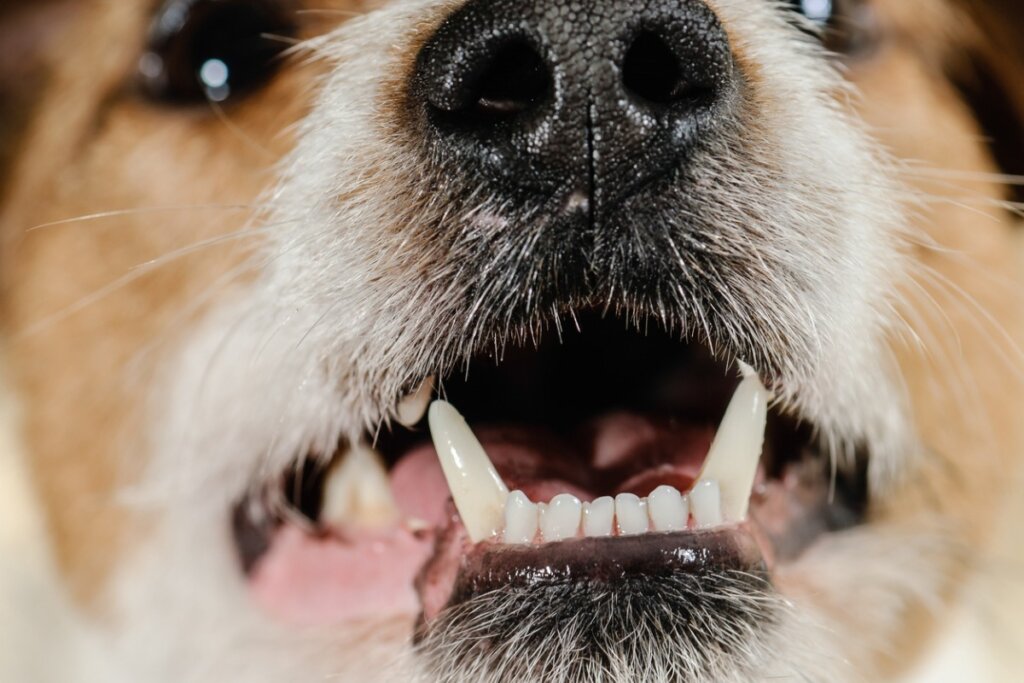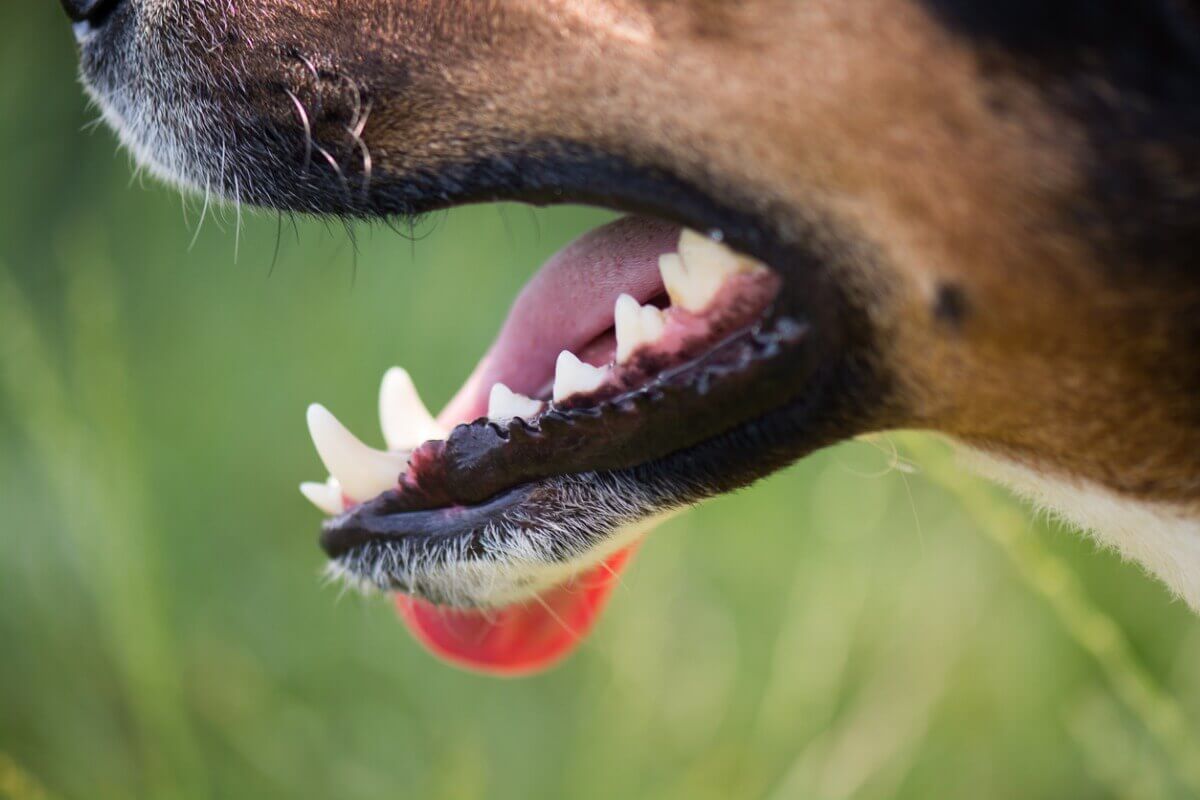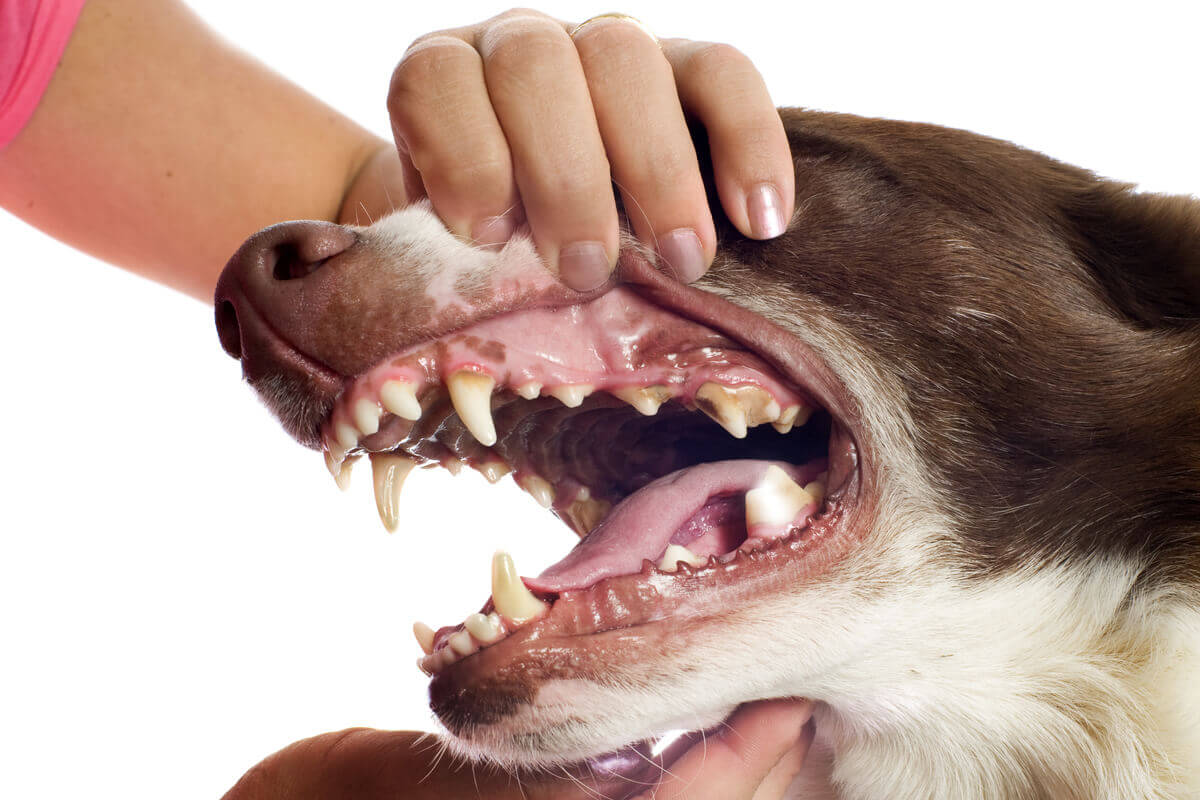The 4 Types of Teeth in Dogs

Dogs are carnivorous diphiodonts and heterodonts. This means that they have 2 sets of teeth throughout their lives, the deciduous dentition (or baby teeth) and the permanent dentition, and they have teeth that are different from each other spread throughout their mouths. The types of teeth in dogs vary in shape and number depending on what stage they’re in.
If you want to know what types of teeth dogs have and how their teeth develop, don’t miss the following article. This information will be really useful when it comes to detecting possible oral problems in your dog at any time of their life.
The development of canine teeth
Dogs are born without their teeth. At 15 days of age, the deciduous dentition begins to erupt in a specific order, exemplified in the following list:
- Canines: These are the first to appear. First, the upper ones erupt and, a couple of days later, the lower ones.
- Incisors: Between the 18th day and one month of life, the incisors emerge. They emerge from the ends to the center and first emerge in the jaw.
- Premolars: The last premolars can take up to 8 weeks to appear.
Puppies have 28 teeth, 12 of which are incisors, 4 canines, and 12 premolars, with a dental formula of 2 x (Di 3/3 Dc 1/1 Dp 3/3) = 28. A dog won’t have molars until it develops the definitive and permanent dentition.
When puppies are teething, it’s common for them to want to chew on everything within their reach to ease the discomfort. It’s a good idea to provide them with specific teethers.
From the age of 3 months, permanent teeth begin to emerge. To do this, the roots of the deciduous dentition are absorbed, dropping the baby teeth as the new ones push them out. There’s also a specific order for these teeth, which is as follows:
- Incisors: These are the first teeth to emerge. Unlike deciduous dentition, they start to grow from the center towards the ends of the mouth. By 4 months they should all have erupted.
- Canines: Their growth usually overlaps at about 4 months with that of the incisors. The lower ones emerge before the upper ones.
- Premolars: They emerge from 4 and a half months to 6 months of age.
- Molars: These teeth are the last to erupt, completing the definitive dentition at around 8 months of age.
This will add up to a total of 42 permanent teeth. The permanent dental formula for the adult (and without any oral misalignment) is as follows: 2 x (I 3/3 C 1/1 P 4/4 M 2/3)= 42.

The 4 types of teeth in dogs
Now that you know the development of the teeth in dogs, you’ll be interested to know what functions each of its types fulfill. You can see this in detail below, so keep reading.
Incisors
The incisors are the small teeth at the front of the mouth. The dog uses them to scrape off the meat that’s stuck to the bones, as they have 3 small pointed lobes. This serrated shape is called fleur de lis.
From the center to the ends, the dog has 2 external incisors, 2 medium and 2 pincers, both in the jaw and in the maxilla.
Dogs also use their incisors to groom themselves. They often try to remove fleas and ticks by nibbling their fur and using the incisors to detect and kill the parasites. These teeth are also useful for relieving itchy skin.
Canines
Canines are the long, pointed teeth that are located in the front of the mouth but behind the incisors. They’re also known as fangs. These teeth are used to tear large pieces of meat into pieces that fit in the mouth. Strict or facultative carnivorous animals (such as dogs) have developed fangs, hence their common name canids .
The fangs also create an anchor point when the dog catches something in its mouth: If it drives them through an object (or prey) it will be very difficult to remove it. When it comes to defence, the canines will be the dog’s most powerful weapon.
The canines are also very important for intraspecific communication. Showing them is usually a sign of aggressiveness or an intent to attack.
Premolars
The premolars are the sharp teeth behind the canines and their main function is to chew and grind food. It’s common to see canids chewing with only one side of the mouth once the mouth is opened, as they’re using the premolars to form the food bolus.
Molars
Molars are also used for grinding, but they’re much stronger and larger than the premolars. Therefore, these teeth grind harder food, such as dry food and treats. They’re the teeth located furthest back in the mandible and maxilla.
Ruminant mammals have more developed molars than omnivores and predators. This is because they must chew grass to the max to get their nutrients.
How to help your dog during teething
We mentioned above that dogs feel discomfort when their teeth grow in. To make this process easier and prevent them from destroying objects by chewing on them, here are a few tips:
- Offer your puppy chew toys: Make sure they’re chewable and sized to fit your puppy’s mouth. Beware of poor quality toys, as they may contain toxic substances or break, increasing the risk of ingesting a piece.
- Check your dog’s mouth frequently: This way you will know if everything’s going okay. If you notice excessive bleeding, teeth that don’t fall out, pain, or other symptoms, see your vet.
- Clean your dog’s teeth: Use the right products for your dog’s dental hygiene. This will ensure that there’s no infection in your dog’s open gums or cavities.

These steps won’t only alleviate teething discomfort in your puppy but will lay the foundation for safe play where the dog becomes accustomed to using its toys (rather than destroying objects). In addition, if they become familiar with toothbrushing from a young age, it’ll be much easier to take care of your best friend’s mouth for the rest of its life.
All cited sources were thoroughly reviewed by our team to ensure their quality, reliability, currency, and validity. The bibliography of this article was considered reliable and of academic or scientific accuracy.
- Butler, P. M. (1939, May). Studies of the Mammalian Dentition.–Differentiation of the Post‐canine Dentition. In Proceedings of the Zoological Society of London (Vol. 109, No. 1, pp. 1-36). Oxford, UK: Blackwell Publishing Ltd.
- AVEPA. (2012). Dentición en cachorros: determinación de su edad. https://avepa.org/pdf/Informe_denticion_y_edad_perros.pdf